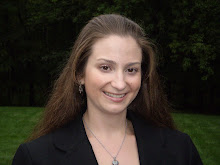
Today was the final day of my Japan Fulbright Memorial Fund Teacher Program experience. It’s hard to believe that three weeks have passed so quickly! It feels like just yesterday I said good-bye to all of you, the students and faculty at Lincoln School, and then said hello to all of my new JFMF teacher friends. For the past three weeks they have been just a few doors away and now it is time for us all to go back to our families, friends, and schools in our home states. I miss each of you so much and can’t wait to see you next week! (I am sorry that I will not be at school to celebrate Halloween with you.)
When I first started this blog, after much contemplation (careful thinking), I decided to name it 旅 – JOURNEY. On my final night in Japan, as I reflect on the experiences I have had, I do not think that I could have picked a better title. The JFMF program has truly been the experience of a lifetime. I think that I am only now just beginning to realize the many ways in which it has impacted me as a person, learner, and teacher. While the physical journey concludes this week, the educational journey has only just begun. I look forward to sharing all that I have learned with you during the coming months.

This evening JFMF hosted a Sayonara buffet. We laughed and cried together as we thought about all of the fun times we had shared. At the end of the evening we sang Auld Lang Syne, which in Japan is a traditional graduation or closing ceremony song. Then some teacher friends and I went to see the Tokyo tower lit up one last time. As I looked at the tower reaching towards the stars, I thought about my long flight home. Sayonara! See you on Monday!
I would like to thank the Japanese government for sponsoring the JFMF program and the Caldwell-West Caldwell Board of Education for allowing me to attend. I so appreciate the MANY people who helped me prepare for the experience and helped care for my students while I was away from the classroom. I particularly need to thank my long term sub, Pauline Condon, and my teaching partner, Lisa Zevin. You are the best! Also, I would like to thank Mr. Williams for first telling me about the JFMF program and for guiding me along the way. Thank you!
When I first started this blog, after much contemplation (careful thinking), I decided to name it 旅 – JOURNEY. On my final night in Japan, as I reflect on the experiences I have had, I do not think that I could have picked a better title. The JFMF program has truly been the experience of a lifetime. I think that I am only now just beginning to realize the many ways in which it has impacted me as a person, learner, and teacher. While the physical journey concludes this week, the educational journey has only just begun. I look forward to sharing all that I have learned with you during the coming months.

This evening JFMF hosted a Sayonara buffet. We laughed and cried together as we thought about all of the fun times we had shared. At the end of the evening we sang Auld Lang Syne, which in Japan is a traditional graduation or closing ceremony song. Then some teacher friends and I went to see the Tokyo tower lit up one last time. As I looked at the tower reaching towards the stars, I thought about my long flight home. Sayonara! See you on Monday!
I would like to thank the Japanese government for sponsoring the JFMF program and the Caldwell-West Caldwell Board of Education for allowing me to attend. I so appreciate the MANY people who helped me prepare for the experience and helped care for my students while I was away from the classroom. I particularly need to thank my long term sub, Pauline Condon, and my teaching partner, Lisa Zevin. You are the best! Also, I would like to thank Mr. Williams for first telling me about the JFMF program and for guiding me along the way. Thank you!
















 Today I attended a very interesting workshop on math education in Japan. It was fascinating to see how the US and Japan are both alike and different. In the US each state decides what students will learn in schools and writes their own math curriculum. In Japan the entire country uses the same math curriculum. This means that every student in the same grade learns the same topics no matter which prefecture (state) they live in.
Today I attended a very interesting workshop on math education in Japan. It was fascinating to see how the US and Japan are both alike and different. In the US each state decides what students will learn in schools and writes their own math curriculum. In Japan the entire country uses the same math curriculum. This means that every student in the same grade learns the same topics no matter which prefecture (state) they live in.



